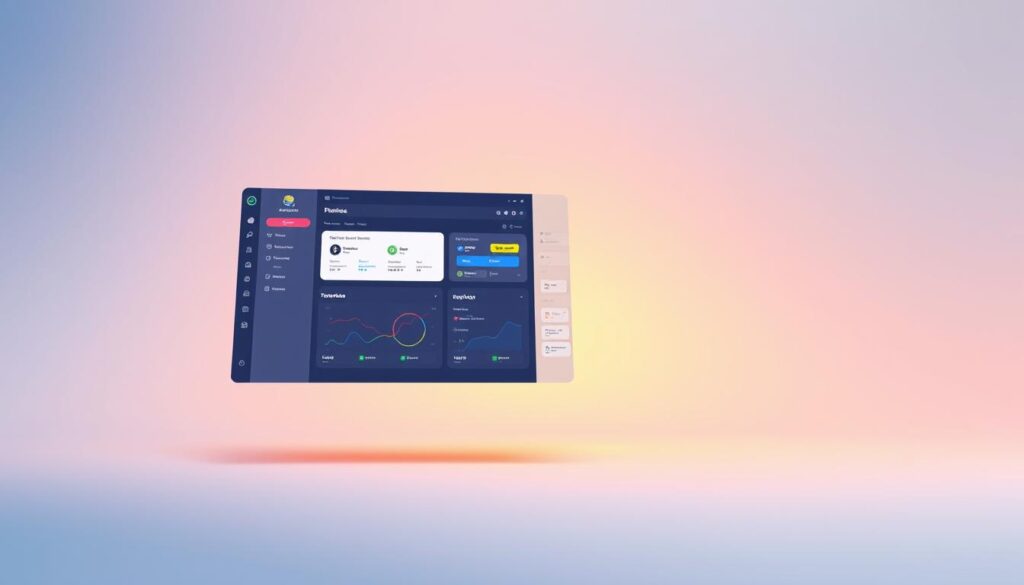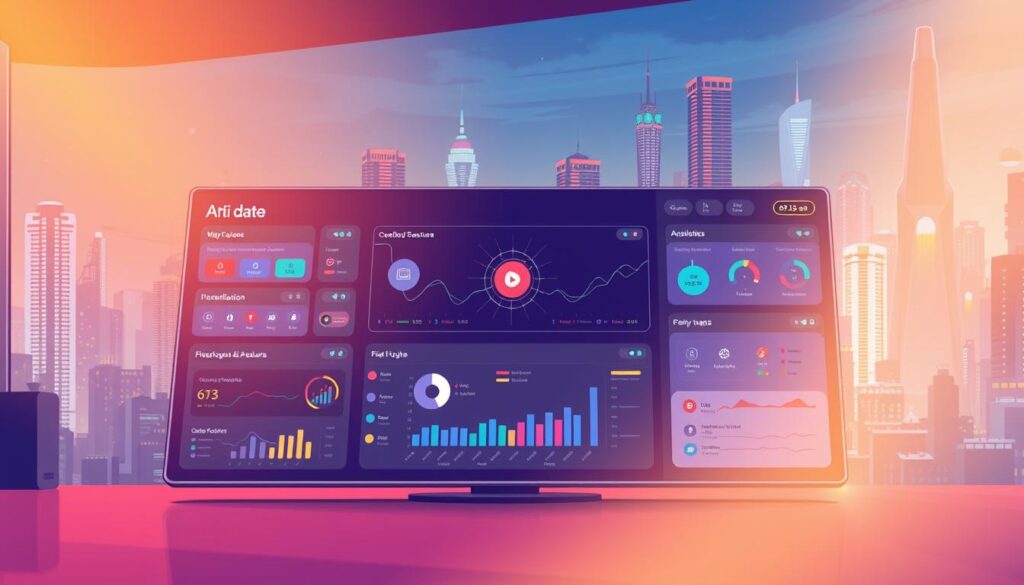In today’s fast-paced world, technology has made it easier than ever to create powerful solutions for your business. With the rise of innovative platforms, you can now develop custom applications without needing extensive technical skills. These tools are transforming the way ideas come to life, making the process faster and more accessible.
Whether you’re looking to streamline operations or launch a new product, these solutions offer a cost-effective way to bring your vision to reality. For example, platforms like BuildFire AI and Google Teachable Machine have helped thousands of users create functional applications in record time. This guide will walk you through the steps to choose the right tool for your needs.
By the end of this article, you’ll understand how to leverage these technologies to enhance your development efforts and achieve your goals. Let’s dive in and explore the possibilities together.
Introduction to No-Code AI Apps
Innovative platforms are reshaping how we approach problem-solving in the modern era. These tools allow anyone to create custom applications without needing advanced technical skills. By simplifying the development process, they make it easier for businesses and individuals to bring their ideas to life.
What Are No-Code AI Apps?
No-code AI apps are platforms that enable users to design and deploy applications using drag-and-drop interfaces. These tools eliminate the need for traditional coding, making them accessible to non-developers. For example, platforms like Smyth OS and Bubble allow users to create customer support bots or lead generation agents in under an hour.
These solutions democratize technology by removing barriers to entry. With pre-built templates and real-time feedback, users can quickly adapt their applications to meet specific needs. This approach saves time and reduces reliance on specialized developers.
Why They Matter in Today’s Technology Landscape
In a rapidly evolving tech world, no-code AI apps offer a competitive edge. They allow businesses to streamline workflows and improve customer experiences without significant investment. For instance, companies using these tools have reported up to 40% increases in productivity.
These platforms also foster innovation by empowering individuals to experiment and iterate quickly. With the no-code market projected to grow to $21.2 billion by 2025, it’s clear that these tools are shaping the future of development. Early adopters are better positioned to succeed in this dynamic landscape.
Understanding the Impact of No-Code Technology
Traditional methods of app development are being replaced by more agile solutions. Modern platforms have disrupted the software development lifecycle, making it faster and more accessible. This shift is not just a trend—it’s a game-changer for businesses and users alike.
The Transformation of Traditional App Development
In the past, creating an application required specialized skills and months of effort. Today, platforms like Adalo and Zapier have simplified the process. These tools allow you to design and deploy apps in a fraction of the time.
For example, Adalo enables rapid publishing, while Zapier automates workflows seamlessly. This approach eliminates the need for extensive coding, empowering even non-technical teams to create sophisticated solutions. The result? Faster development cycles and reduced costs.
Benefits for Business and End Users
For businesses, these tools offer significant advantages. They reduce reliance on developers, saving both time and money. Companies can now bring products to market quicker, gaining a competitive edge.
End users also benefit from this shift. Applications are more user-friendly, with features deployed faster than ever. This improves the overall experience, making technology more accessible to everyone.
By embracing these platforms, you can streamline your processes and focus on innovation. The future of development is here, and it’s more efficient than ever.
No-Code AI Apps: Build a Money-Making Tool Without Programming
The rise of intuitive platforms has revolutionized how applications are developed, making it simpler for anyone to create functional solutions. These tools eliminate the need for traditional coding, opening doors for users of all skill levels. Whether you’re a business owner or a creative individual, these platforms offer a streamlined way to bring your ideas to life.
Accessibility, Speed, and Cost Advantages
One of the biggest benefits of these platforms is their accessibility. You don’t need to be a developer to create a powerful application. With drag-and-drop interfaces, anyone can design and deploy an app in minutes. This process saves significant time compared to traditional methods.
Speed is another key advantage. What once took weeks can now be completed in hours. For example, platforms like BuildFire AI allow users to publish apps quickly, reducing development cycles. This efficiency is a game-changer for businesses looking to stay competitive.
Cost savings are equally important. By removing the need for expensive developer hours, these tools make app creation affordable. You can invest your resources into other areas of your business, maximizing your return on investment.
Selecting the Right No-Code Platform for Your Needs
Choosing the right platform is crucial for success. Start by evaluating your specific needs. Do you require advanced features like automation or third-party integrations? Platforms like Adalo offer robust solutions for various use cases.
Consider scalability as well. Your chosen tool should grow with your business, supporting future updates and expansions. Look for platforms with strong customer support and a proven track record.
Finally, compare features and pricing. Some platforms offer free tiers, while others provide premium options for advanced functionality. By selecting the right tool, you can ensure a smooth and efficient development process.
Key Features and Tools for Building No-Code AI Applications
Modern technology has unlocked new possibilities for creating powerful solutions with minimal effort. When choosing a platform, it’s essential to focus on features that simplify the development process while enhancing functionality. Here’s what to look for in a reliable tool.

Core Features to Look For in a No-Code Tool
A great platform should offer a visual editor for easy design. Customizable templates allow you to start quickly, while robust backend integration ensures your app runs smoothly. For example, Adalo provides an intuitive interface that simplifies the creation process.
Another critical feature is a built-in relational database. This allows you to store and manage data efficiently. Adalo’s database integration makes it easy to handle complex information without technical expertise.
Integrating Automation and Third-Party Services
Automation is a game-changer for any business. Platforms like Adalo support integrations with services like Zapier, enabling seamless workflow automation. This reduces manual tasks and improves efficiency.
Third-party integrations, such as Stripe for payments, extend your app’s capabilities. These features ensure your solution is versatile and ready to meet diverse needs. By selecting a tool with a strong ecosystem, you set your project up for long-term success.
Real-world examples from Adalo demonstrate how these features can transform your development process. With over 1 million custom applications created, it’s clear that modern tools are reshaping the way we build solutions.
Step-by-Step Process to Create Your AI-Powered App
Creating an AI-powered app has never been more straightforward, thanks to user-friendly platforms that simplify the entire process. Whether you’re a seasoned professional or a beginner, these steps will guide you from concept to launch.
Planning, Design, and Template Selection
Start by defining your app’s purpose. Identify your target audience and the problem your app will solve. Conduct market research to understand your competition and user needs. This step ensures your app has a clear direction.
Next, choose a platform that fits your requirements. Look for tools with customizable templates and responsive design options. These features save time and ensure your app looks professional across devices.
Building, Testing, and Launching Your Application
Once your plan is in place, begin building your app. Use drag-and-drop interfaces to add features like databases, automation, and third-party integrations. Platforms like Adalo make this process intuitive, even for non-technical users.
Testing is crucial for a seamless user experience. Run multiple tests to identify and fix bugs. Gather feedback from beta users to refine your app before the final launch.
When you’re ready, publish your app on web and mobile platforms. Promote it through social media and other channels to attract users. After launch, monitor performance and make iterative improvements based on feedback.
Integrating App Development Platforms and Automation Solutions
Efficiently combining development platforms with automation tools can transform how you manage your app’s backend processes. By leveraging these solutions, you can streamline workflows, improve efficiency, and ensure seamless data management. This approach is essential for creating scalable and effective applications.
Leveraging Platforms Like Adalo and Zapier
Adalo is a powerful platform that simplifies app creation with its drag-and-drop interface. It allows you to design and publish applications across multiple platforms effortlessly. When paired with Zapier, you can automate workflows by connecting various services, such as email marketing tools or payment gateways.
For example, Adalo’s integration with Zapier enables real-time updates between your app and third-party systems. This ensures that your business operations run smoothly without manual intervention. Such combinations save time and reduce errors, making your app more reliable for users.
Ensuring Seamless Data Integration and Workflow Automation
Data consistency is critical for any app. By using Adalo’s relational database and Zapier’s automation capabilities, you can ensure that information flows seamlessly between systems. This eliminates discrepancies and keeps your datum up-to-date across all platforms.
Workflow automation further enhances efficiency. For instance, you can set up automated notifications for new orders or customer inquiries. This not only improves user engagement but also frees up your team to focus on strategic tasks.
By integrating these tools, you create a robust ecosystem that supports your app’s growth. Real-world examples show how businesses have achieved significant improvements in productivity and customer satisfaction through these integrations.
Real-World Use Cases and Success Stories
Across industries, innovative solutions are proving their value in solving real-world challenges. These platforms enable businesses to create custom app solutions that drive efficiency and growth. From healthcare to e-commerce, success stories highlight the transformative power of these tools.
Case Studies from Diverse Industries
In healthcare, platforms like Google Teachable Machine have streamlined patient care. For example, hospitals use these tools to analyze medical images faster, reducing diagnosis times. This improves patient outcomes and operational efficiency.
In e-commerce, companies like Carrefour Taiwan have leveraged these solutions to enhance customer experiences. Their AI Sommelier provides personalized wine recommendations, integrating a vast wine database. This has increased customer satisfaction and sales.
Fintech companies like Scotiabank have also seen significant benefits. Their AI chatbot has enhanced the digital client experience, earning awards for its performance. By automating routine tasks, they’ve improved service quality and reduced costs.
How No-Code Innovations Drive Business Growth
These tools are driving growth for businesses across industries. For instance, Best Buy’s virtual assistant app has transformed customer support. It troubleshoots product issues and manages subscriptions, improving user experiences.
By leveraging real-time datum, businesses can make informed decisions. This tool has helped companies reduce costs significantly. For example, Telecom Italia (TIM) increased efficiency by 20% using a Google-powered voice agent.
From automating workflows to enhancing customer interactions, these platforms are reshaping industries. They offer a competitive edge by enabling faster, more efficient operations. Success stories like these inspire innovation and demonstrate the potential of these solutions.
Tips for Optimizing Your No-Code AI App Workflow
Optimizing your workflow is essential for maximizing the efficiency and effectiveness of your app. By focusing on design, user experience, and scalability, you can ensure your solution remains relevant and impactful. Let’s explore practical strategies to enhance your platform and drive better results.

Best Practices for Design and User Experience
Start by prioritizing simplicity in your app’s design. A clean, intuitive interface ensures users can navigate your solution effortlessly. Use modular design principles to break down complex features into manageable components. This approach not only improves usability but also makes updates easier.
Regular testing is crucial for identifying and fixing issues early. Gather feedback from real users to understand their pain points and preferences. Tools like heatmaps and session recordings can provide valuable insights into how users interact with your app.
Strategies for Continuous Improvement and Scalability
To keep your platform relevant, adopt a mindset of continuous improvement. Analyze performance datum to identify areas for enhancement. For example, track metrics like load times, user retention, and feature usage to guide your updates.
Scalability is another critical factor. Choose a tool that supports growth, allowing you to add new features and handle increased traffic seamlessly. Automation can also play a key role in scaling your business operations efficiently.
Finally, stay updated with emerging trends and technologies. Regularly updating your app ensures it remains competitive and meets evolving user needs. By following these strategies, you can create a solution that stands the test of time.
Conclusion
The evolution of modern solutions has made it possible for anyone to create impactful applications effortlessly. These platforms offer significant advantages, from cost savings to faster development cycles. By leveraging these tools, you can streamline your business operations and bring your ideas to life without extensive technical expertise.
Throughout this guide, we’ve explored the step-by-step process of creating a functional app. From planning and design to testing and launch, these steps ensure your solution meets user needs effectively. The accessibility and speed of these platforms make them ideal for entrepreneurs and businesses alike.
Now is the time to take action. Start experimenting with these tools and see how they can transform your workflow. By embracing innovation, you’ll gain a competitive edge and unlock new opportunities for growth. The future of development is here—take the first step today.
